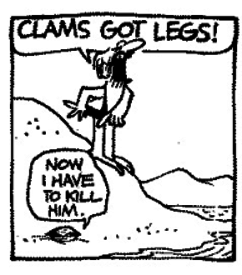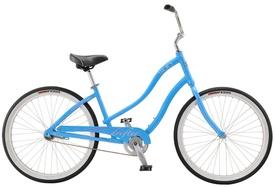Cyclists ; Why must I keep my foot flat as I peddle? I tend to point my toe down at times.

helocat
Posts: 40 Member
In my spin classes the instructor is saying to not point your toe down and keep your foot flat though the pedal stroke. However I tend to point my toe a bit. Is this to keep more power going into the stoke?
1
Replies
-
I tend to ride toes down. At 47, I compete very well with the younger guys.1
-
ask the instructor. if s/he's making rules s/he ought to be able to explain them.
idk, but for what it's worth i ride a regular bike quite a lot. flat foot feels more honest to me for some reason. i guess i assume it has something to do with me not cheating on ankle mobility. it does feel like a more solid push - for instance, you can't stand up on the pedals and 'mash' if you're being all swan lake about it.
spin might be different, though idk. i'd rather have a hole bored in my head than take a spin class.4 -
I spin three times a week and have done so for years. Definitely ask! Most likely other students will want to hear the answer too.
I'm assuming it's for power but find out for sure.1 -
for the purists that ride, keeping your foot flat on the stroke drives the most power thru the pedal/crank (it's physics that I won't explain here). for something like a spin class, I don't see it as making a big difference one way or the other.2
-
Honestly, it's more of a preference than anything. The average Joe/Jane out there riding tends to dip their toes slightly on the down stroke...I'm fairly neutral, but my toes do dip a bit...then you have true "toe dippers" who substantially point their toes into the down stroke...then you have "heel droppers" who dig their heels down during the down stroke and their toes dip during the up stroke...this is actually an old technique called "ankling" which is highly efficient, but can be hell on the tendons in your ankle and your Achilles.
It seems to me that various pedaling strokes come in and out of favor with purists, but in my estimation their really isn't a right or wrong and things come down more to what is natural.2 -
The idea is that you should be pedaling in circles, not in squares. That means you should be "pulling back" with the bottom foot while pushing forward at the top.
However, my understanding is that this can be accomplished with a toe down stroke as well--certainly there are pro cyclists who do so.
https://roadcyclinguk.com/how-to/technique/improve-pedalling-efficiency.html
Chances are this is an instructor who is just repeating something learned in spin school.0 -
-
for the purists that ride, keeping your foot flat on the stroke drives the most power thru the pedal/crank (it's physics that I won't explain here). for something like a spin class, I don't see it as making a big difference one way or the other.
^This. I am a Spinning instructor and I tell students to pedal with a flat foot for this reason. Also, as an instructor you may see one or two people with toes down through the entire pedal stroke (which is incorrect, I'll get into that more in a second). So, instead of calling that person/s out, I'll tell the entire class to pedal with a flat foot, which is more effective and powerful for most people in your average Spinning class.
Toe down from 6 oclock to 12 oclock of the pedal stroke is fine, and that's fine instruction if you have a group of regulars that you know their abilities. But as an instructor that most of the time has newbies in the class, you keep the instructions simple and safe.
2 -
efficiency as mentioned
I guess if you sit too far back (which the instructor should pick you up on!) you might be slightly overextending your ankle joint every time you push down0 -
Isn't there also a lot of "standing" and sitting back down in spin class? Seems like it would be hard to transition if your foot is just about "sliding" out the pedal. Also more pressure on your foot once you attempt to stand?1
-
In my spin classes the instructor is saying to not point your toe down and keep your foot flat though the pedal stroke. However I tend to point my toe a bit. Is this to keep more power going into the stoke?
Power, as identified, and muscular effect. It helps to maintain power balance in the muscle pairs that you're working.0 -
I find I need to keep my foot flat to protect my Achilles tendons.
I tore both of them on a 1200 km randonnee in 2002 when I had my saddle slightly too high for the hilly terrain, and in the photos you can clearly see I needed to point my toes down in order to reach the bottom of the pedal stroke. Should have set off warning bells for me, but by the time I realised, it was too late.
So ever since then, I've set my saddle just a teensy bit (we're talking millimetres) on the low side to ensure that my foot is as flat as it can be at the bottom of the pedal stroke.0 -
From the article I cited, which obviously no one read......(sniff)
"As cyclists, there’s no shortage of advice and cues from club-mates of how best to improve and on any one ride you may see a variety of pedalling styles. Typically speaking, there are three main pedalling techniques: neutral, toe-down and heel-down, and while they’re a matter of individual style, Spragg says there’s one key thing you should avoid.
“No actively pulling on upstroke,” he says. “I hear a lot from clients about pulling as the foot recovers around, but in fact you should only be getting your foot out of the way of the pedal so that you negate negative torque (i.e. pushing against your own stroke with the other leg).”"3 -
You really only pull on the upstroke when you're climbing a very steep grade or sprinting.0
-
In my spin classes the instructor is saying to not point your toe down and keep your foot flat though the pedal stroke. However I tend to point my toe a bit. Is this to keep more power going into the stoke?
Tell your spin instructor that some of the best Tour de France riders have been "toe down". Such as 5 time winner Jacques Antquetil, 7 time winner Lance Armstrong (even though his wins were yanked for doping), Iban Mayo, and many others over the years. It's all preference. Toe up, toe down, foot flat. It all works and there are a lot of other factors that lead to one's personal preference regarding fit and function.
http://www.bicycling.com/training/fitness/perfect-pedal-stroke
https://www.stevehoggbikefitting.com/bikefit/2011/05/pedalling-technique-what-is-best/
https://www.outsideonline.com/1812476/top-11-cycling-technique-tips0 -
I paid attention last night. The only time my toes were down was when I stood on the pedals, from 3 to 6 o'clock.0
-
Leadfoot_Lewis wrote: »for the purists that ride, keeping your foot flat on the stroke drives the most power thru the pedal/crank (it's physics that I won't explain here). for something like a spin class, I don't see it as making a big difference one way or the other.
^This. I am a Spinning instructor and I tell students to pedal with a flat foot for this reason. Also, as an instructor you may see one or two people with toes down through the entire pedal stroke (which is incorrect, I'll get into that more in a second). So, instead of calling that person/s out, I'll tell the entire class to pedal with a flat foot, which is more effective and powerful for most people in your average Spinning class.
Toe down from 6 oclock to 12 oclock of the pedal stroke is fine, and that's fine instruction if you have a group of regulars that you know their abilities. But as an instructor that most of the time has newbies in the class, you keep the instructions simple and safe.
I teach as well and this sums it up for me.
As instructors we want you to get the most out of a ride in the safest way. Form cues are one way to make people check themselves.0 -
SingingSingleTracker wrote: »Tell your spin instructor that some of the best Tour de France riders have been "toe down".
Yes but these riders were almost certainly using clipless pedals and shoes, such that power is/was always being directed to the wheels, regardless of their foot or toe orientation.
Using an other than flat footed position while pedaling w/o clipless shoes and pedals on a real (or spin bike) , can result in foot slippage and less power delivery to the wheels (or flywheel) .
Doesn't mean you still won't be able to get your the wheels of your bike (or the flywheel of your spin bike) to move, it'll just be less efficient when you do.
0 -
Toe down can injure your foot - I speak from experience. ( I get the physics thing above, too )0
-
Interesting, given this conversation I tried pedaling slightly toes down yesterday, on the bike in my avatar. I found it impossible. My bike forces an upright upper body and the pedals are "foot forward", it literally won't let me. lol.
http://www.sun.bike/product_detail.php?cl2=BIKE+PATH&cl3=DRIFTER
I do find myself lifting on the upstroke though, I work for it actually, since it works my lower abs. Leg lifts basically. It's a one speed coaster brake, so without major inclines here in florida, I have to find other things that make my workout more intense if I want to. Such as, riding for a time on the grass, dirt roads and working against the wind on windy days. Its either hard to stand with foot forward, or I'm just too out of shape for it yet, but I have a hard time standing on the pedals.0 -
successgal1 wrote: »Interesting, given this conversation I tried pedaling slightly toes down yesterday, on the bike in my avatar. I found it impossible. My bike forces an upright upper body and the pedals are "foot forward", it literally won't let me. lol.
http://www.sun.bike/product_detail.php?cl2=BIKE+PATH&cl3=DRIFTER
I do find myself lifting on the upstroke though, I work for it actually, since it works my lower abs. Leg lifts basically. It's a one speed coaster brake, so without major inclines here in florida, I have to find other things that make my workout more intense if I want to. Such as, riding for a time on the grass, dirt roads and working against the wind on windy days. Its either hard to stand with foot forward, or I'm just too out of shape for it yet, but I have a hard time standing on the pedals.
The more aggressive one's position is on the bike, the more apt they are to ride in a toe down position (such as time trials). Example of two great aggressive riders in history: http://djconnel.blogspot.com/2013/07/time-trial-position-anquetil-versus.html
We could also say, the further back on a bike a rider prefers to ride, the foot position changes automatically. We could also say in a sport such as mountain biking where the terrain changes every few seconds (uphill, downhill, off camber, over technical obstacles) the foot position is constantly changing. One pedals flat footed, toe down, heel down and everything between as they ride through the singletrack and are constantly moving and shifting their position around on the bike.
Of course, I am only interested in clipped in cycling which is what I do whether in a spin class, on an exercise bike, a mountain bike, a road bike, a tandem, a recumbent. I only ride clipped in while on a bike.
No arguments with achieving a flatter foot position in a spin class on a bike not equipped with clipless pedals. My argument is that a blanket statement saying that the flat foot position is the only foot position for cycling is erroneous.0 -
SingingSingleTracker wrote: »successgal1 wrote: »Interesting, given this conversation I tried pedaling slightly toes down yesterday, on the bike in my avatar. I found it impossible. My bike forces an upright upper body and the pedals are "foot forward", it literally won't let me. lol.
http://www.sun.bike/product_detail.php?cl2=BIKE+PATH&cl3=DRIFTER
I do find myself lifting on the upstroke though, I work for it actually, since it works my lower abs. Leg lifts basically. It's a one speed coaster brake, so without major inclines here in florida, I have to find other things that make my workout more intense if I want to. Such as, riding for a time on the grass, dirt roads and working against the wind on windy days. Its either hard to stand with foot forward, or I'm just too out of shape for it yet, but I have a hard time standing on the pedals.
The more aggressive one's position is on the bike, the more apt they are to ride in a toe down position (such as time trials). Example of two great aggressive riders in history: http://djconnel.blogspot.com/2013/07/time-trial-position-anquetil-versus.html
We could also say, the further back on a bike a rider prefers to ride, the foot position changes automatically. We could also say in a sport such as mountain biking where the terrain changes every few seconds (uphill, downhill, off camber, over technical obstacles) the foot position is constantly changing. One pedals flat footed, toe down, heel down and everything between as they ride through the singletrack and are constantly moving and shifting their position around on the bike.
Of course, I am only interested in clipped in cycling which is what I do whether in a spin class, on an exercise bike, a mountain bike, a road bike, a tandem, a recumbent. I only ride clipped in while on a bike.
No arguments with achieving a flatter foot position in a spin class on a bike not equipped with clipless pedals. My argument is that a blanket statement saying that the flat foot position is the only foot position for cycling is erroneous.
Makes perfect sense to me. I chose my upright bike due to pain management needs, shoulder bursitis and neck issues from a car accident. Leaning forward on my hands can cause horrendous flare ups that take months to re-resolve, best not got there. The bike came in handy last year when I dislocated a rib, I was still able to sit upright and carefully bike around, often one-handed, without jostling it out of place.1
This discussion has been closed.
Categories
- All Categories
- 1.4M Health, Wellness and Goals
- 394.2K Introduce Yourself
- 43.9K Getting Started
- 260.4K Health and Weight Loss
- 176.1K Food and Nutrition
- 47.5K Recipes
- 232.6K Fitness and Exercise
- 438 Sleep, Mindfulness and Overall Wellness
- 6.5K Goal: Maintaining Weight
- 8.6K Goal: Gaining Weight and Body Building
- 153.1K Motivation and Support
- 8.1K Challenges
- 1.3K Debate Club
- 96.4K Chit-Chat
- 2.5K Fun and Games
- 3.9K MyFitnessPal Information
- 15 News and Announcements
- 1.2K Feature Suggestions and Ideas
- 2.7K MyFitnessPal Tech Support Questions

















